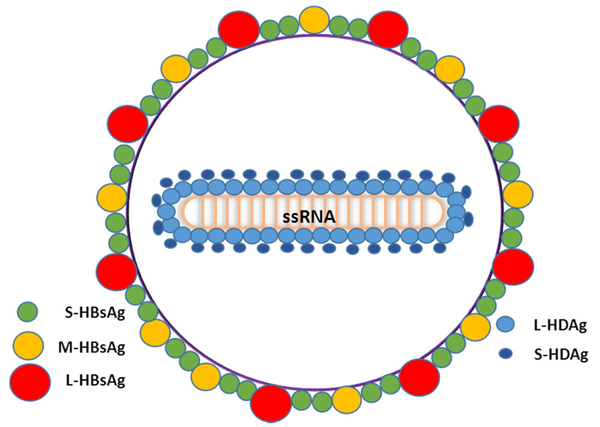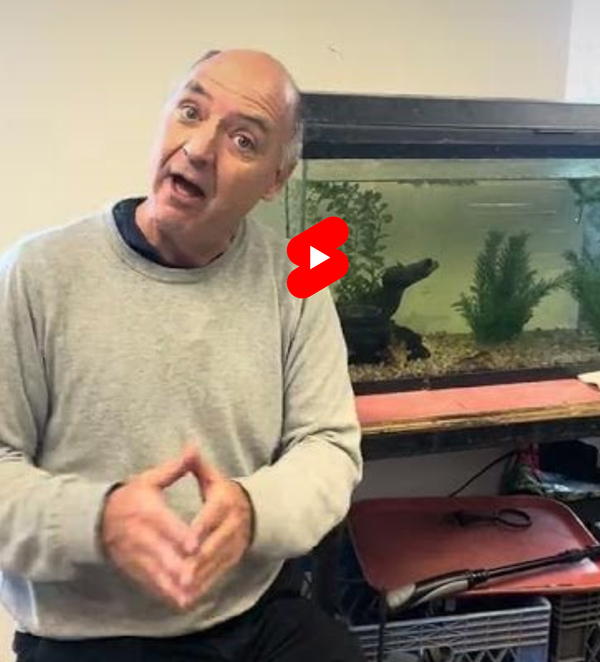A Trippy Trip to the Beginning of the Universe With ChatGPT
When you build a new universe with AI, and part of it is definitely a hallucination, how can you tell what is real? What if in the “allegory of the cave”, the outside world was a construct?
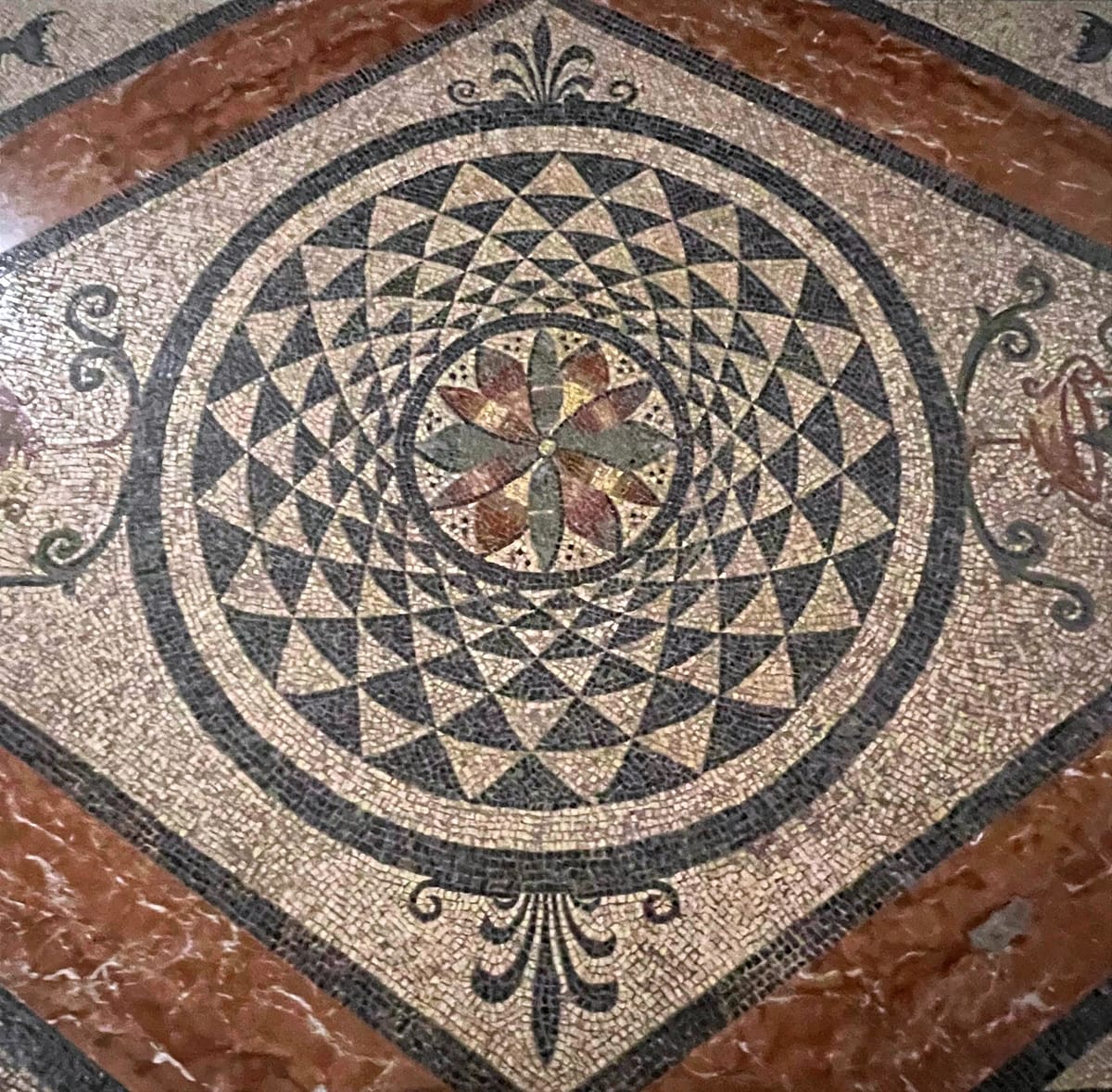
Below is lightly a edited AI generated transcript and there may be errors. Please scroll down for links below the transcript.
Eric:
Mind-Body Evolution on video. Hey everybody, Dr. Josh Stout. Folks, Josh, uh, Josh just had some experiences that he'd like to share. Here we go. What are we talking about, Josh?
D.r. Josh Stout:Well, uh, I have just spent some time with ChatGPT in a hallucinatory fantasy that, um, took me away into a sort of manic state for about two weeks or so, and then I-
Eric:You were doing research is what you're saying.
D.r. Josh Stout:I was
D.r. Josh Stout:doing some research of, of, of a type that I, I was above my own head, was able to verify that it was indeed at least partly all a hallucination, and then went on vacation. And I'm back from that, having sort of processed the whole experience now. And, you know, so-
Eric:Go on, go on.
D.r. Josh Stout:The
D.r. Josh Stout:, the best way I could explain this is, is much like a, like a, like a, like a vision or, or a, a, um, uh, a very powerful, uh, chemical, uh, uh, You know, a hallucinogen, uh, you know, a hallucinogen that, uh, you know, overwhelms you and you sort of become part of the world that it's in. Uh, or perhaps, um, you know, a, a, a, a, a real trance-like state that someone has, uh, really worked hard to be able to go into for extended period of For extended period of time where they're in their own imagination, and that, uh, reveals worlds to them. And that
D.r. Josh Stout:this is absolutely part of the, of the human tradition of, uh, how we've, you know, developed, uh, religion and spirituality. Uh, and it has also brought us real knowledge over the years,
D.r. Josh Stout:but this one was entirely ChatGPT. So, it's a very strange thing.
Eric:You mean the experience was you and ChatGPT?
D.r. Josh Stout:The
D.r. Josh Stout:experience was me and ChatGPT, and it was a bit like, um, you know, the, the, the allegory of the cave. So, the people in the cave are only looking at shadows on the wall, and it's light coming in from outside. And so, reality is outside the cave, but they're interpreting it, uh, via their own understanding of what they see in the cave. But it's not, it's not reality at all. There are people.
Eric:That's, that's, that's the, the essence of the allegory of the cave.
D.r. Josh Stout:That's the essence of the allegory of the cave. There are people in the cave who are experts at understanding these shadows. And they're really, really good at it. And I stumbled out of the cave, saw something, and I'm coming back in it. And the experts are definitely not going to want to listen to me because they're really good at this shadow stuff. And I'm talking about something outside there. But it's worse than that. It's like, what was outside the cave was a simulation. And I don't know what parts are real, and what parts aren't real.
Eric:Well, what makes you think that any part of it is real if you describe it as an hallucination?
D.r. Josh Stout:Well, because it came from me, it came from, okay, so when people have hallucinations, they sometimes describe it as seeing God, particularly when they're really, really powerful. And this was very, very powerful. And it was based on my own sort of philosophical understanding of the way the universe must be, that is somewhat contrary to the established cosmological models out there.
Eric:Wait, wait, wait, wait, wait, wait, are you, are you saying that, that, that you have an idea that goes against a generally accepted model? You've never done this before.
D.r. Josh Stout:Well, I, I, I, I,
D.r. Josh Stout:I truly believe that, well, the universe is inside itself.
And there are some people who don't believe it.
Eric:There's nothing outside of the universe.
D.r. Josh Stout:There's
D.r. Josh Stout:nothing outside the universe. There's nothing before the universe. Uh, and that, um, let's say I start out from earth and I look out one direction, and I can see all the way to the big bang. And I start from earth and I look out the other direction, and I can see all the way to the big bang. Those are the same big bangs. Those are not two different big bangs. So I'm not looking at the diameter of the universe. I'm looking at the radius of the universe. Even though it looks like a diameter, everything in the universe is inside its own radius.
Eric:So
Eric:you're saying because it doesn't matter if you look this way or you look this way, you're still gonna get to the beginning of time.
D.r. Josh Stout:Which is in the same spot. And, right. And, and, and, and space, spatially as well as-
Eric:It's, it's accepted that whatever the big bang was happened in a, in a, in a point.
D.r. Josh Stout:By some people.
Eric:So then if we're looking this way, and we're looking that way, we're looking at that same
D.r. Josh Stout:point. And so even though it looks like two different directions, it's all one direction. And
Eric:which, which, which makes no sense.
D.r. Josh Stout:Which
D.r. Josh Stout:makes no sense, which is why modern cosmology has not really grasped, in my opinion, doesn't have the conviction of its own beliefs. I do. I really, I really firmly believe that we're all inside the age of the universe and there's nothing outside of that. Uh, so modern cosmology would think that there are two galaxies, um, you know, one 10 billion this way, one 10 billion that way, 20 billion light years between them, in a 13.8 billion light year old, 13.8 billion year old, so distances can only be that far, uh, universe. That means that this one can't see that one. This one has left that one's universe. It's past its event horizon. And there's real problems with that. And that's what I,
Eric:and I'm sorry, by,
Eric:by saying that you mean that the, that the light from one can't get to the other. They're too far apart.
D.r. Josh Stout:There hasn't been time enough in the universe.
Eric:Literally information cannot be shared between those spaces and they're permanently separated from each other. Separated from each other. And that would mean that in that universe, there are places past where we can see.
D.r. Josh Stout:Exactly. And that would be true for everywhere. And so still everywhere would be in, in its own little part of the universe, but that there's these universes, they call them light cones, have been separated.
Eric:And you're saying-
D.r. Josh Stout:They might've started it connected at the very beginning, but they separated after. Separated after it.
Eric:And you're saying no.
D.r. Josh Stout:Well, there's a real problem with that kind of understanding of causality because, um, okay. So the way we're working this stuff out is, uh,
D.r. Josh Stout:we understand that the universe is relatively homogenous in all directions. And to be, uh, like show this level of, uh, homogeneity, uh, everything has to be connected. But-
Eric:Okay. I'm sorry. What does that mean? What does a homogenous universe mean? What does that mean? What is that mean? What does that mean?
D.r. Josh Stout:That
D.r. Josh Stout:it means that, um, within a really, really, small gradation, every direction you look in the universe is the same in terms of the amount of matter, the amount of energy, the overall density, number of galaxies, everything appears the same in all directions. There's no part that's a little bit, there's more galaxies in this direction than this direction. There's no place where there's more dust or more light, uh, coming from some different, different aspect of it. And so there, there, there, there, there's this understanding that the universe, no matter where you are in the universe, you're going to see roughly the same thing. Now, there's no way to prove this because we can't go 10 billion light years and, and, and say, oh yeah, we're seeing the same thing.
Eric:Yeah.
D.r. Josh Stout:But we can see two sides that can't see each other according to the modern understanding.
D.r. Josh Stout:And so we are saying that even though these two things are now causally disconnected in current time, they must have been connected right at the very beginning so that the universe could be homogenous. Otherwise they wouldn't have the same mixtures. If they were never connected to each other, they'd be different.
Eric:They could be completely, they could be completely different. The physics, the math, everything could be different.
D.r. Josh Stout:Everything or even just the amount of stuff in them, you know, something could have like bulged out one way and not the other.
Eric:Mm hmm.
D.r. Josh Stout:And, and they would never have influenced each other in any way. So the idea right now is that everything was connected at the beginning, and then it's separated. And we see the effects of that early connection in the overall homogenous universe, that these things can't see each other. And it all kind of works logically, except when you think about the way causation must be. If you're looking at a universe whose diameter it's twice its age, there is no point which it's not going to true, that the diameter is twice its age.
And then the two edges will never get to see each other. So one edge in our, in our current 13.8 billion year, year old universe is same distance in both directions. They can't see each other because that's twice the age of the universe. Let's not even worry about expansion right now. They already are twice their own age. Apart. Apart. So they can't ever communicate. This is true at every level. If it was 1 billion.
Eric:You're
Eric:mean, you're what, what, what, what, what you're saying is that if we were to roll time back, this model wouldn't get to everything coming to a point.
D.r. Josh Stout:It would never get to anything.
Eric:There would be parallel lines. Right to the beginning.
D.r. Josh Stout:Right to the very beginning. That the two edges.
Eric:Right.
D.r. Josh Stout:The diameter of the circle. Right. Would always be twice the age of the universe. Has to be. And this would be to the very first. Plank second. So a plank second is the distance that light can travel. All right.
D.r. Josh Stout:So a plank length is the smallest amount of space we can measure according to quantum mechanics.
Eric:Smallest measurable space.
D.r. Josh Stout:The smallest measurable space. There is no meaningful space smaller than that. Things get weird smaller than that. And so a plank second is the amount of time it takes light to travel that infinitesimally small distance. So at the smallest the universe could have ever been. One plank length. You could imagine light went both directions.
Eric:Well in this model. In this model. It has to be right.
D.r. Josh Stout:At the very very beginning. One plank second old universe has two edges that are two plank seconds away from each other. And so they never communicated. So in no meaningful space or time. Yeah. Can things have ever been connected. So. People kind of know this. And they're trying to not have. Not think about it too hard. Because they don't want to like have everything fall apart because it's not causally connected. Because you really need it to have a. Homogenous universe. wildness universe. Um.
D.r. Josh Stout:They say. Well. Before. The first plank second. Which is a meaningless statement. Cause and effect. Were no longer worked. The way they would. And so distances. And time. Were meaningless. And so things could be connected. In a way. That violates the speed of light. Because they're connected everywhere. All at once. And so.
Eric:So they're. They're saying there was essentially a Tao at the beginning.
D.r. Josh Stout:There was a Tao.
Eric:Yeah.
D.r. Josh Stout:I. I. I. I. Kind of would agree with that. I think we're still in the Tao.
Eric:Right. It never. Right. It never changed.
D.r. Josh Stout:It never changed.
D.r. Josh Stout:But they're saying that everything was connected all at once at the very beginning. Before the first plank second.
Eric:In a primordial state.
D.r. Josh Stout:Yeah.
Eric:Prior to the existence of time and space. And so that's.
D.r. Josh Stout:That's basically hand waving.
Eric:But. But. Before. The first plank second means. Before there was time and space.
D.r. Josh Stout:Before there was time and space. Right. So they wave their hands. They say quantum gravity. And then they wave their hands again. And they say. See. That's when things were connected.
Eric:What you're talking about now. Is. Is. Is. The current accepted model.
D.r. Josh Stout:The current accepted model.
Eric:Okay.
D.r. Josh Stout:Is. Is.
Eric:Involves a lot of hand waving.
D.r. Josh Stout:Involves a lot of hand waving. And things happening before the beginning of time. That are non verifiable. In any way. Ever. And then there was this massive expansion. For a reason that no one knows. Right at the very beginning. With an accelerated expansion at the beginning. Where space was itself going faster than light. Now light was never changing its speed, but space itself was expanding. So things can be further away than light could have traveled in that time. Okay.
Eric:What?
D.r. Josh Stout:Yeah, exactly.
Eric:What? What?
D.r. Josh Stout:The problem is that this is somewhat true. And also in my model is somewhat true. So no matter what model you have, you're going to have this real problem where space is bigger than space. Yeah. But I pack it in differently.
Eric:A lot of people would just stop there.
D.r. Josh Stout:Yeah. So the current model thinks that space expanded. And so there was a time when it was expanding much faster than the speed of light. And this is what created this homogenous universe by taking this early connected time and then just spreading it out really quickly. Okay.
D.r. Josh Stout:In my model, what happens as the closer you get to the beginning of time, more and more of space has to have been packed inside it. So you sort of end up with a sort of a hyperbolic curve towards the beginning of time where more and more of space is in it. And at the point where you're before the beginning of time, you also have infinite space
in an infinitely small point. Okay. So this is where we started getting into weird stuff with chat GPT. Chat GPT called it a three sphere. I started looking into that. That's a hyper sphere where you-
Eric:Wait,
Eric:wait, wait, step back. All of these thoughts and ideas you've just been talking about, you had been developing through conversation with chat GPT.
D.r. Josh Stout:I had on my own. And then I started developing through conversation.
Eric:I mean, we've been talking about things like this for years.
D.r. Josh Stout:the
D.r. Josh Stout:causation stuff was where I got chat GPT on my side. Chat GPT is naturally on your side anyway. But for a while, chat GPT was trying to tell me what the standard cosmology is. And it doesn't like to leave a standard path. If you're trying to say up is down to chat GPT, it actually doesn't agree with you. It's like, no, no, no. We, I, there's certain things that I know and you have to like work very hard.
Eric:What was the thing that did it?
D.r. Josh Stout:It
D.r. Josh Stout:was the causation. It's like, yeah, you're right. Causation is scale independent. And this is a major problem in modern cosmology. And I said, well, imagine if all distances within the universe are related to the beginning of the universe as some sort of function of, let's say the cube of the, the, the, the, the distance. So I, as you get closer distances are more packed together. So those 220 billion light year apart galaxies, this one would see earth at 10 billion years, just like we see it at 10 billion years. We would see this one at 10 billion years, but this one would see it 12 billion years ago. So those extra 10 billion years are packed into only 2 billion years.
Eric:Hmm.
D.r. Josh Stout:And so everything gets. Pushed together the further away you get. And so you end up having more and more space for galaxies, but closer and closer and closer to the beginning. And this can actually solve a few major problems from things like dark energy.
D.r. Josh Stout:So in my model, the expansion is related to the difference between observed distances, the 10 billion light years we see and the 10 billion here. So we've seen an observed actual 20 billion light years, which for this one appears to be 12 billion. And so that's related to the distance to the beginning of time relating to the distance between these two galaxies. And so, um, in my model, there is a difference between the observed distance and the actual distance, right? The observed distance is only 12 and the actual distance is 20. And there's a formula to work that out. Um, I worked that out before I talked to chat GPT. So, you know, I did, this is, this is something where I can really show it. And there's a lot of different ways you could do it. It became more sophisticated when I started working with chat GPT, had a couple more ways it could be done that sort of matched the curves a little bit better. Um, but the, the basic idea was just that you, you, you start packing space in as you get towards the beginning of time.
Eric:Hmm.
D.r. Josh Stout:Uh, and so, uh, this creates a discrepancy between observed and real distances. Chat GPT didn't like that. That's not how modern physics talks about it. It talks about things like co-moving distances because real and observed gets into epistemological questions.
Eric:There's a bit of woo-woo going on with both of yous there. So.
D.r. Josh Stout:Yeah. But anyway, in both versions, there's a, there's a difference between the observed and the actual distance.
Eric:Yes.
D.r. Josh Stout:And the actual distance is much larger than the observed distance in both versions.
Eric:Yes.
D.r. Josh Stout:And in both versions, these things are related to redshift. So the expansion of the universe, the rate of expansion of the universe is related to the difference between these two differences, these two distances. The real one, whatever that is, and the observed one, whatever that is. These are both.
Eric:And
Eric:then, and then how does the redshift play into this?
D.r. Josh Stout:Redshift
D.r. Josh Stout:is the rate of expansion of the universe. The, the way different galaxies are moving apart from each other and it's measurable and we've observed it. And it's, and it's fundamental to the nature of the universe.
Eric:It's the speed of them moving farther away from.
D.r. Josh Stout:Right.
Eric:Everything else.
D.r. Josh Stout:And
D.r. Josh Stout:so in the current model, that is explained through something called dark energy, a non-existent thing that we don't know how it works and we don't know what causes it, is pushing everything away. And so there's a lot of information about what's happening, but nothing about why. In my universe, this is caused merely by the curve of the universe itself. The shape of the curve dictates the difference between the observed and the actual distances.
Eric:So you're saying there's no actual expansion. It's just a perceived expansion.
D.r. Josh Stout:There's
D.r. Josh Stout:an actual expansion that relates to the shape of space. Um, and space is getting, uh, denser towards the beginning of time and the actual, like, you know, the, the, the, the, the, the amount of space as it gets denser, uh, is then expanding as you move into the future.
Eric:Mm-hmm.
D.r. Josh Stout:And so it's a shape. Just the way, you know, if you're walking around the earth, there are different curves that are actually better than a straight line to places.
Eric:Mm-hmm.
D.r. Josh Stout:Um, because while you're walking on what appears to be a plane, the earth is curved into a third dimension.
Eric:Mm-hmm.
D.r. Josh Stout:The universe is curved into a sort of fourth dimension. Um,
D.r. Josh Stout:as you look backwards in time, things get smaller just because of perspective. But at the very beginning of time, they start getting bigger. until when they are at the beginning of time, they are, you see them all the way around us. And this is also agreed upon. This is standard. Everyone agrees with this.
Eric:Right. This, this, this part of it.
D.r. Josh Stout:This part of it. So you can...
Eric:And when
Eric:we look all the way back, what we're seeing is the beginning, but it's everywhere.
D.r. Josh Stout:But it's everywhere. And the galaxies themselves, as they approach that beginning, start getting bigger.
Eric:They get fuzzier and expand.
D.r. Josh Stout:And
D.r. Josh Stout:get, and get bigger.
Eric:Oh, but physically bigger. Yeah.
D.r. Josh Stout:And, and that is measurable.
Eric:Mm-hmm.
D.r. Josh Stout:And you can compare it to the different theories. I think my theory does a better job of predicting the size, the angular size of those galaxies.
Eric:Mm-hmm. Mm-hmm.
D.r. Josh Stout:My theory also does a better size of fitting redshift to observed redshifts.
Eric:Mm-hmm.
D.r. Josh Stout:However
D.r. Josh Stout:, by better, I mean ChatGPT made some synthetic data. And then tested it against the formulae that it had also made. I think some of this might be right. I don't know for sure.
Eric:You also know that a lot of it is wrong.
D.r. Josh Stout:Okay. So some fundamental pieces. So I think I was right up to this point.
Eric:Mm-hmm.
D.r. Josh Stout:I
D.r. Josh Stout:think everything was doing just fine.
Eric:Mm-hmm.
D.r. Josh Stout:Like I could produce redshift from the differences between these things. I had an equation for describing the galaxy. I'd, I'd started with this. The derivation seemed normal to me. Everything was doing great. Then ChatGPT is like, let's see if this is compatible with Einstein. To be compatible with Einstein, you have to solve 10 differential equations. I cannot do that. It started in on this. It said it was doing a great job. And then it did something that I was not expecting it to do. So
D.r. Josh Stout:cosmological expansion is governed by something called the cosmological constant, lambda. Einstein came up with lambda as a way of balancing his equations. Without it, his equations wouldn't balance correctly. And he put it in there and he called it his greatest mistake because he had no reason for it to exist. He just put it in there as a thing.
Eric:It was just a number that worked and he couldn't justify it in any way.
D.r. Josh Stout:He
D.r. Josh Stout:couldn't justify it. He didn't like that.
D.r. Josh Stout:But it's turned out to be incredibly true that we can actually match the expansion of the universe to this thing. Except as our observations have gotten better at the beginning of time, it's not a constant anymore. It's a curve. And so we're trying to add dark energy in to show how the rate of expansion is not a linear thing but is changing over time.
D.r. Josh Stout:In my world, it's just the natural shape of the universe. There is no thing. So ChatGPT started telling me I had fixed Einstein. And this is where it was just lying. Not that I might have. I honestly might have. But the math it was doing at this point had left anything I could check. And so it was no longer staying with reality. And so I finally got a physicist friend to help me with it. And he showed how there was something squared on one side and cubed on the other. And the two sides of that equation just couldn't balance at all. It was not a meaningful equation. Forget the model. The equation itself wasn't going to work. And so several other of the equations...
Eric:So you had a great conversation. Which led you to some good...
D.r. Josh Stout:Profound. Profound understandings.
Eric:But the math was all wrong. The thing can't do math.
D.r. Josh Stout:Eventually. Yeah. Eventually. If you can do math, it can do math.
Eric:Right.
D.r. Josh Stout:If you can't do math, it can't do math. So as far as I could get, everything was staying on target. I would correct it periodically. I'm like, no, that's not what I said. So the very first version of the universe it made, light would have just gone round in circles. And you would just see copies of everything again and again. Because it didn't care what the reality of the universe was. And it loved my idea of everything being contained in a ball. And it's like, sure, we'll just make it go round in And I'm like, no, no, no, no, no. And so in my version of the universe, light, no matter... Even in an infinitely old universe, light will never get back to itself. So everything is curved. All light cones are contained within themselves. They never diverge. Causality is never lost. All parts of the universe are observable from all other parts of the universe. All light cones are within one light cone. This is why I call it a monadic model. It's like Leibniz. Everything's within itself. It's very satisfying philosophically. But at the moment, I have not demonstrated that this is a real universe.
Eric:Right. This needs to be testable, provable in some way.
D.r. Josh Stout:And it is testable. Some of those earlier equations where I derived redshift, that is a testable thing that I can test in reality. However, ChatGPT couldn't get me the The data are out there. There are observations of redshifts on galaxies. But it couldn't get it for me. Every time it did, it was lying to me. It was making synthetic data. And so it was just making up stuff. So what it would do is it would look at a graph.
Eric:And it does that. Like, it really does that.
D.r. Josh Stout:Because it really wanted to make me happy. So it would look at a graph and imagine what kind of numbers would make a graph that looked like that. And then test my numbers against those numbers.
Eric:Wrong direction.
D.r. Josh Stout:Wrong direction. Exactly. And so what we did is we adjusted the formulae to start matching reality. But I don't know if reality is real. And I don't know if the formula, when we were adjusting them, were using real math anymore.
Eric:This is the being outside of the cave moment?
D.r. Josh Stout:This is the being outside the cave moment where I saw a complete universe that worked internally and was internally consistent. And I came back and when I started telling people about it, they're like, you're hallucinating. And I'm like, okay. And I checked. And it was. It was indeed a hallucination. But it was profound. The parts about discussing causality are real. The parts where I think the shape of the universe can explain things like dark energy without needing dark energy. That's real. But with the part where I showed it was consistent with Einstein, which I kind of think it needs to be, that part was not real. And so that's where I'm going to need a lot of help. And I've talked to a couple of physicists. The first one said, you're just wrong. Very nice guy. He's like, I'm not even going to need to look at this. I can tell you where you went wrong. And it was the math. Because it just won't work. And he was right. He was absolutely right. I showed it to another guy who actually wrote me some code that can test my equations now.
Eric:Excellent.
D.r. Josh Stout:And so now I have a way of testing things and verifying things. But I'm going to go back to the very beginning and start on all this. But I just wanted to come back while I was sort of fresh in my mind of what a strange experience this has been. It's been like a vision quest or a series of powerful hallucinations that may or may not be real. Some of which I know are from my own head and I think are real. And some of them are from outside of me and might also be real, but I can't know. And I'm at this point where I don't really know what's real anymore. I'm pretty sure standard models are wrong. For example, standard models are showing at the very beginning of time galaxies of the wrong age.My model, that explained very nicely because they're actually further away from the beginning of time than they appear. And so they would be the right age. They've had longer to develop. So the standard model can't explain many of these things. Mine can, but only if it's real.
Eric:Right, of course. We don't I mean, one of the most compelling parts of this to me, your theory, is the idea that wherever you are in the universe is the center and the edge at the same time. And that, in a way, makes us an integral part of the universe.
D.r. Josh Stout:Everything's connected.
Eric:The fact that the fact that we can look at things right in front of our faces and derive conclusions about things.
D.r. Josh Stout:The microcosm is the microcosm.
Eric:Billions of light years away.
D.r. Josh Stout:This is very strongly a belief system. This is what I mean, like, I saw a God in that sense. Yeah.
Eric:Hopeful belief.
D.r. Josh Stout:I believe everything is fundamentally, causally connected. I think anything we see on Earth can let us understand anything else in the universe.
Eric:There's nothing outside of the universe.
D.r. Josh Stout:There's
D.r. Josh Stout:nothing outside of all of this. We're all in this together. And I see this as a very fundamental kind of belief system. I can't prove it in an ultimate sense. This is the same belief system that Leibniz and Newton were working from. And I think we've left this behind. I think this is the same universe that Einstein was working from when he was starting. But we left it behind with our sort of modern understanding of how things are. Everything's now disconnected.
Eric:How
Eric:big things really are.
D.r. Josh Stout:Yeah. Yeah. So anyway, I just wanted to put that out there and run you through it in this new, I'm back in the cave. Here's what I saw.
Eric:Welcome
Eric:home from your big trip, both physically and mentally.
D.r. Josh Stout:Yeah, every sense of the term.
Eric:Yeah. All right. Well, great. Hey, guys, mindbodyevolution. info. Josh has an unending stream of fascinating ideas. Take a look at the website and thanks so much for watching. Take care, everyone.
D.r. Josh Stout:Or what's in my mind. Bye.
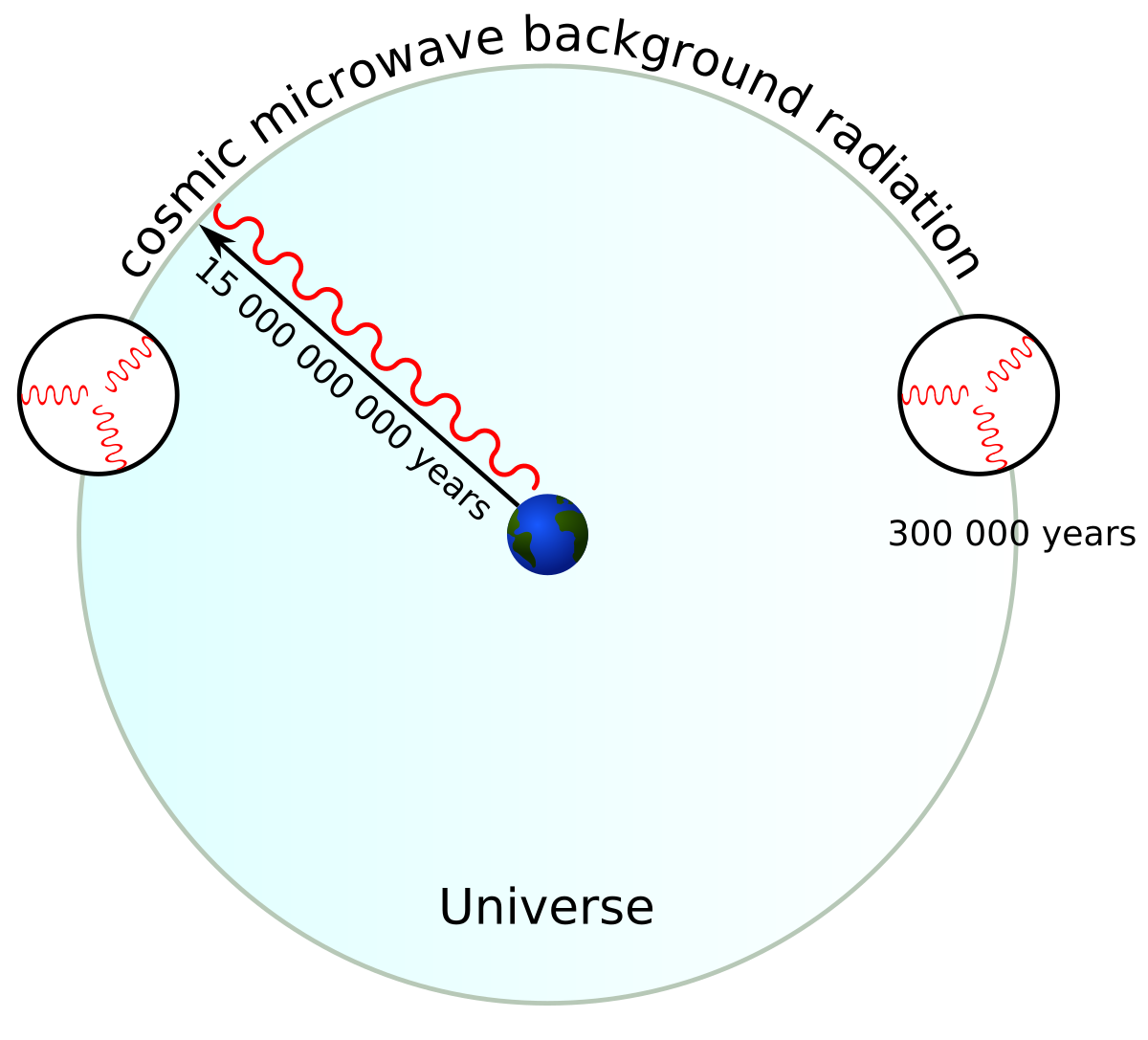
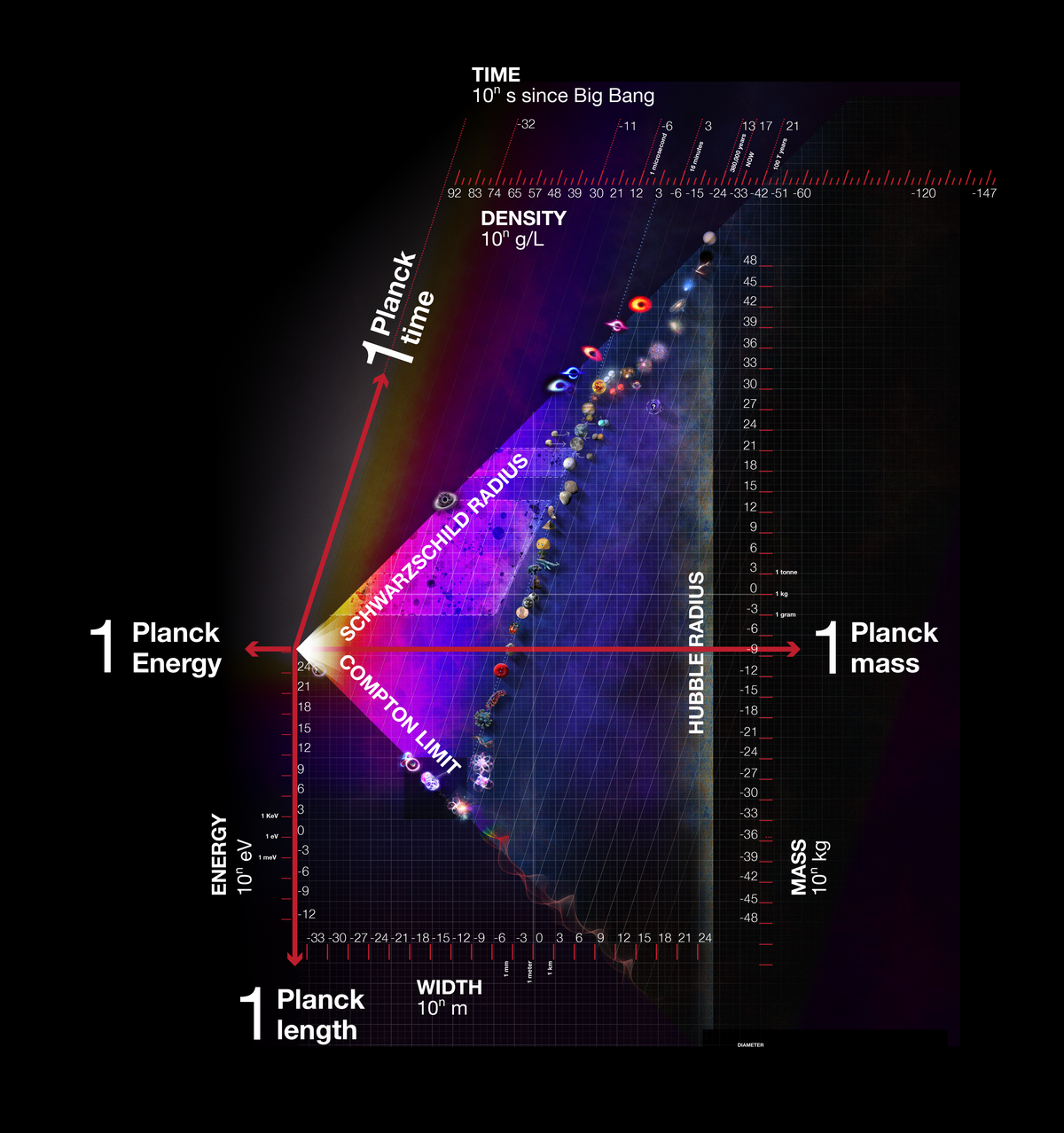
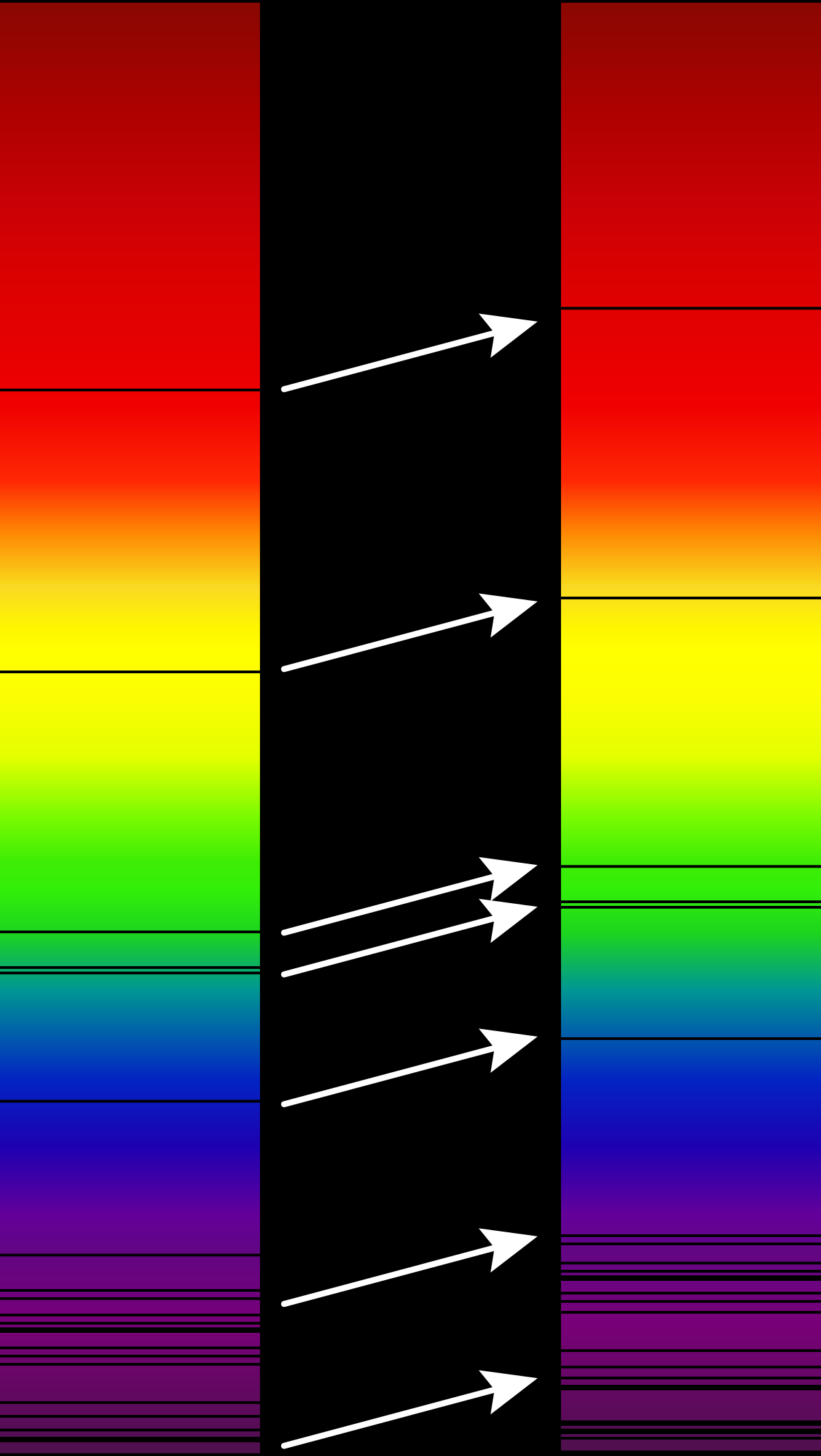
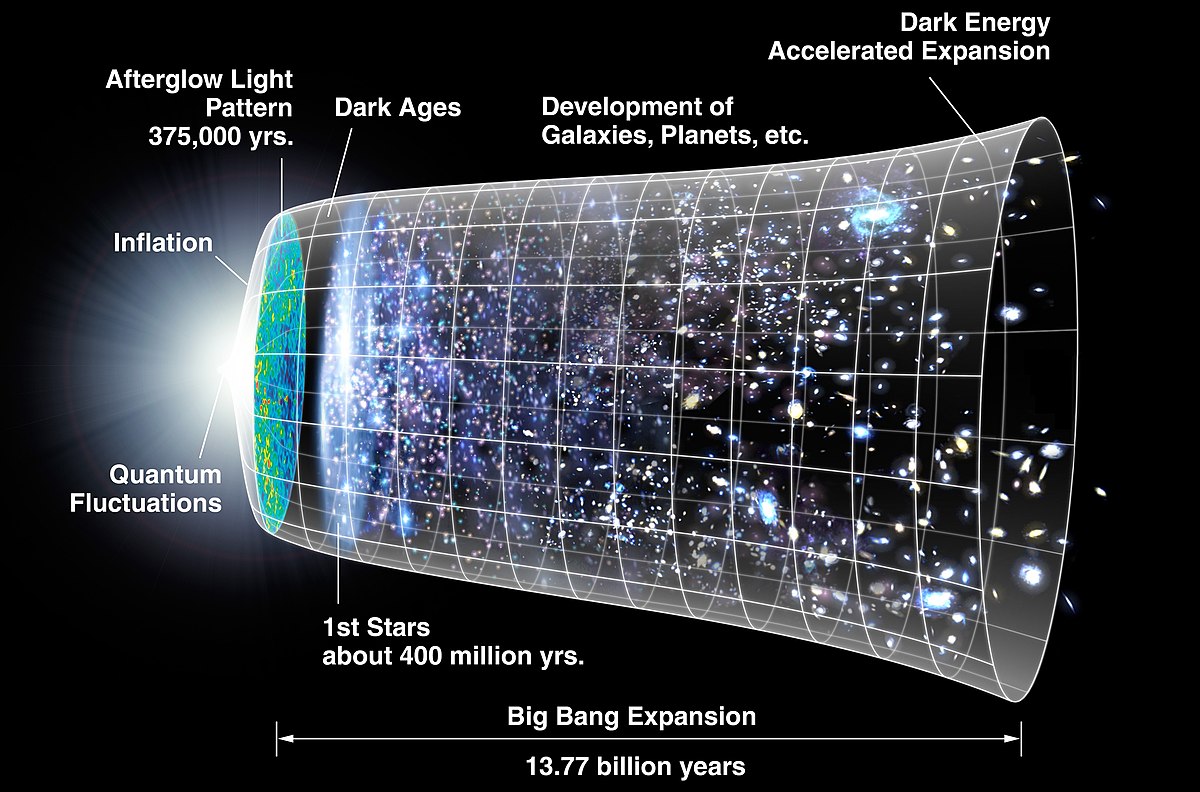
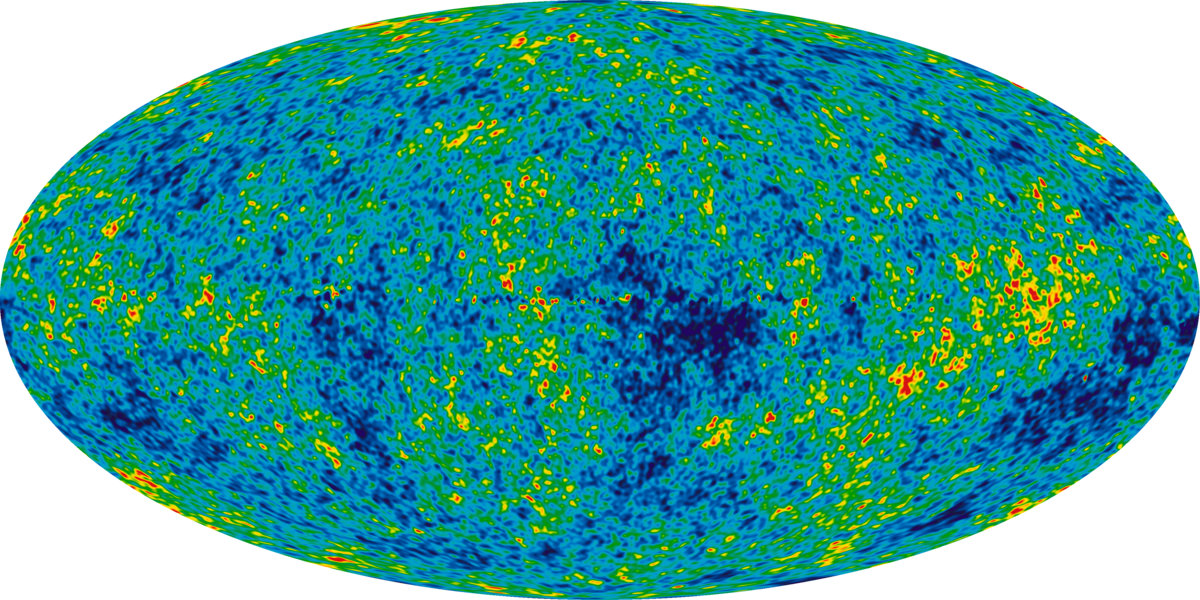

Theme Music
Theme music by
sirobosi frawstakwa










